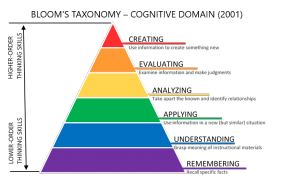Outcomes are concise statements that should focus on the critical functions, services, and processes that impact customer satisfaction, student success, and support services. They describe what the audience will experience, receive, or understand as a result of the activity, service, or process by the department. Outcomes can be defined as:
- Statements that describe the desired quality (timeliness, accuracy, responsiveness, etc.) of key functions and services in an administrative unit.
- Operational statements that tell what services should promote (understanding, knowledge, awareness, appreciation, etc.). It describes the level of performance of an operational aspect of a program or office (ex. Number of services provided, timeliness of a process).
- Statements that aim to increase students’ knowledge or understanding of specific concepts. Describe knowledge, skills, and values that students are expected to gain as a result of their educational experiences (Student Wellness Program may measure student knowledge of healthy habits).
When writing an outcome statement, consider what you’re going to do in order to accomplish the goal. Think about what type of learning needs to happen in order to support the goal.
Writing Outcome Statements
- Step One: Define the Audience – Determine who.
Ex. “Students who attend The Leadership Series”, “Parents”, “External Stakeholders”, “Faculty and still will receive”
- Step Two: Choose an action word/phrase. What is being learned – knowledge, skill, attitude?
Ex. “will be able to identify”
- Step Three: Learning Statement – Under what condition of learning or what level of learning
Ex. “leadership theory in a professional environment”
Examples
“Students who attend The Leadership Series will be able to identify effective leadership theories in a professional work environment by the end of the series.”
“Improve the success of first-generation students with little previous academic success by providing appropriate support services during the academic year.”
“Internal and external clients will be satisfied with the services provided by the research office, decreasing the number of complaints by the end of the academic year.”
“At the end of orientation, parents will be able to describe the types of resources available for intervention and safety.”
Tips for Writing Outcomes
- Be sure that outcomes are precise, specific and clear statements that tell the intended accomplishments.
- Each goal should have two to three outcomes to support it.
- Using Bloom’s Taxonomy can help with determining the level of engagement for outcomes.

